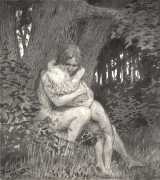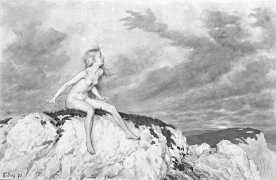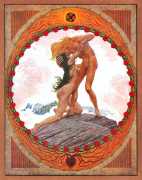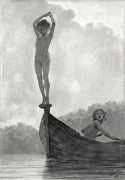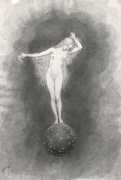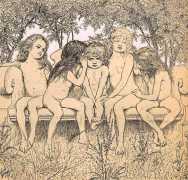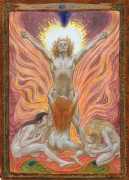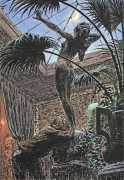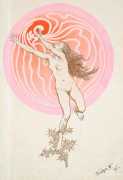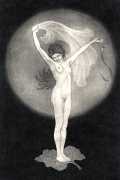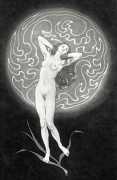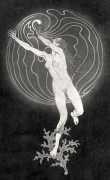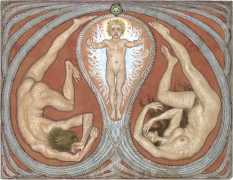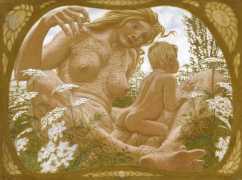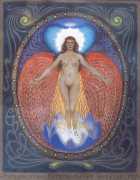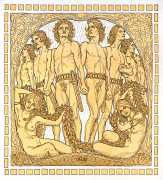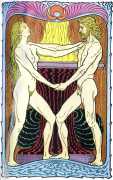
The period from 1901 until 1912 was the high point of Höppener’s recognition. In March 1901 the exhibition Kunst im Leben des Kindes (Art in the Child’s Life) was held at the Haus der Berliner Secession. In addition to Fidus, the exhibition also included works by Max Liebermann, Walter Leistikow, and Paul Schultze-Naumburg. In 1902 a major monograph on Fidus and his work, by his friend Wilhelm Spohr, was published, along with important portfolios of dancers and children in nature. The Spohr monograph can be found here.
Several important and lucrative commissons came Höppener’s way, including one from the Berlin merchant Richard Neuhäuser (1882–1935) for the Fidus cycle Tempeltanz der Seele (Temple Dance of the Soul), for the music room in Neuhäuser’s apartment on Bayerischer Platz.
All the trademark themes of Höppener/Fidus’s output are on display here, a constant being the beauty, power – and in many cases naive innocence – of the naked body. Though never overtly sexual, his figures, open to the elements, express a deeply erotic belief in the fundamental connection between flesh and universe.


